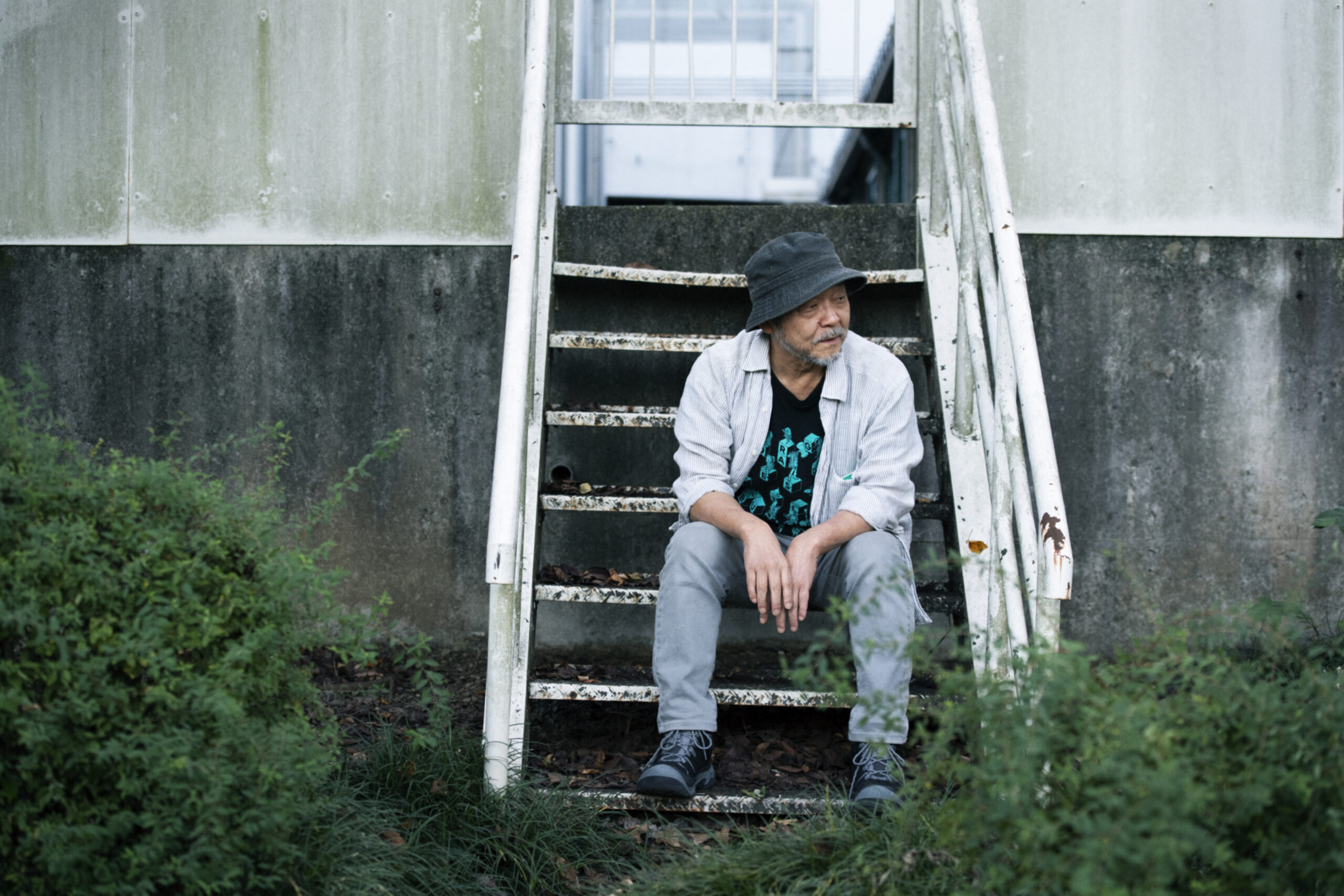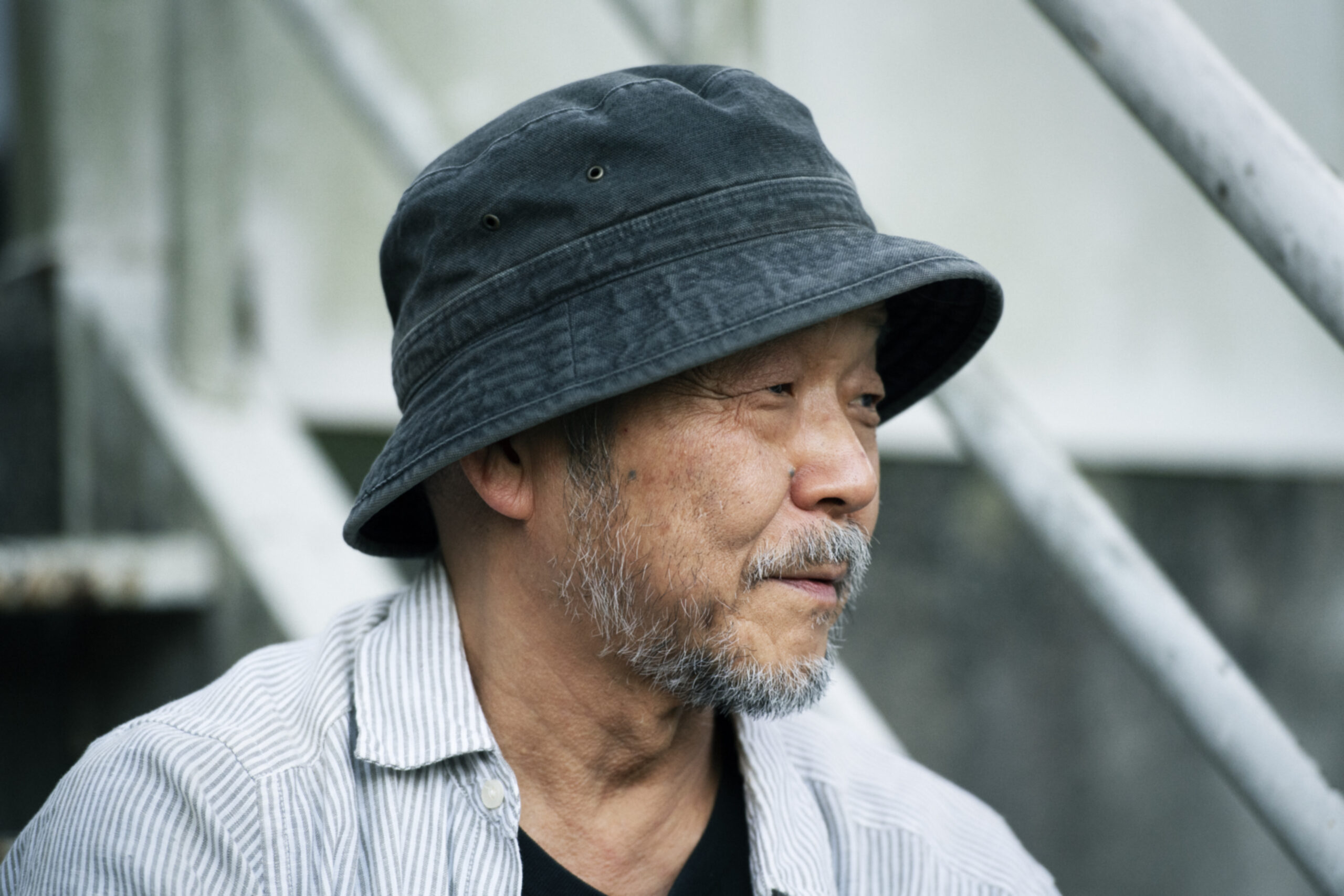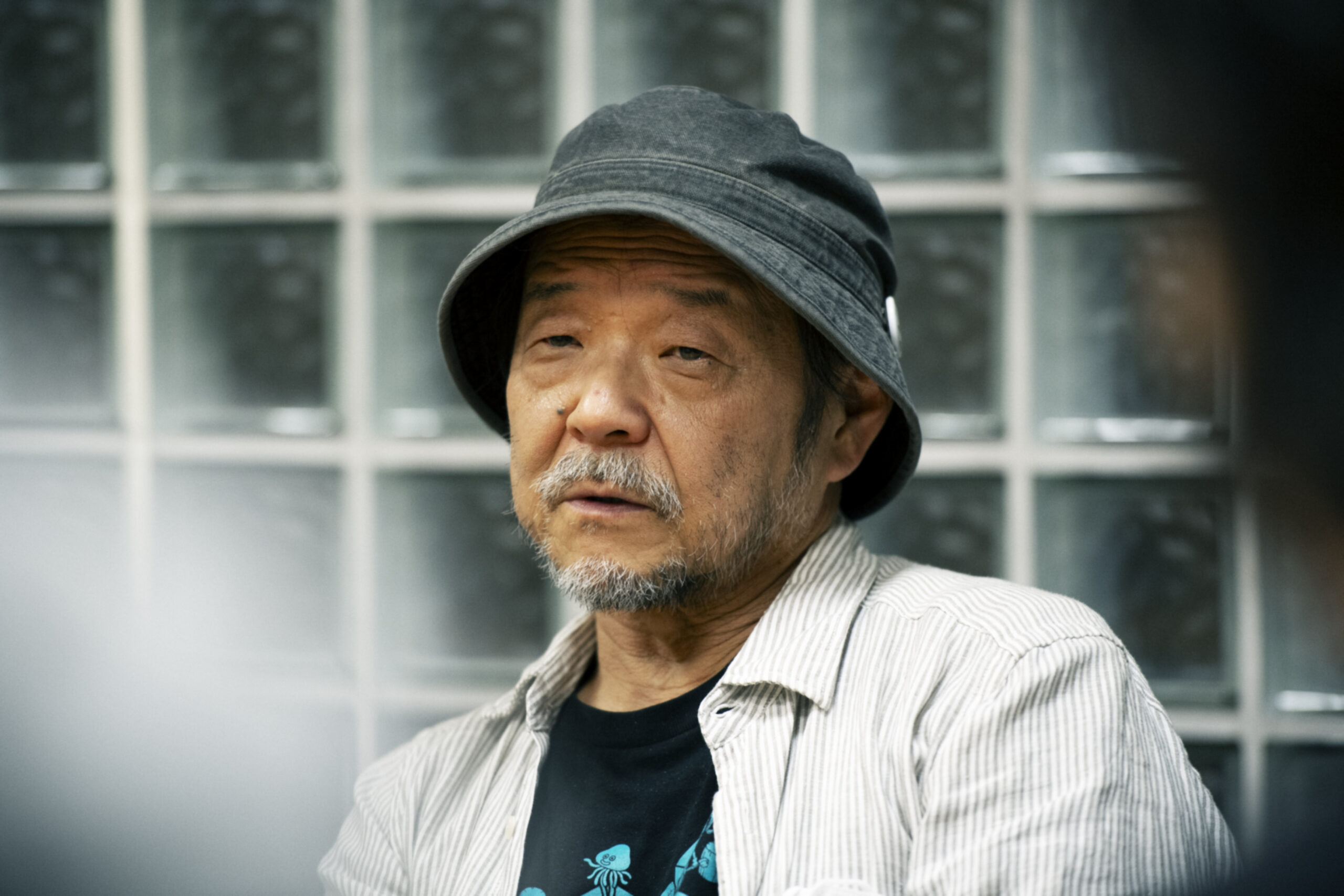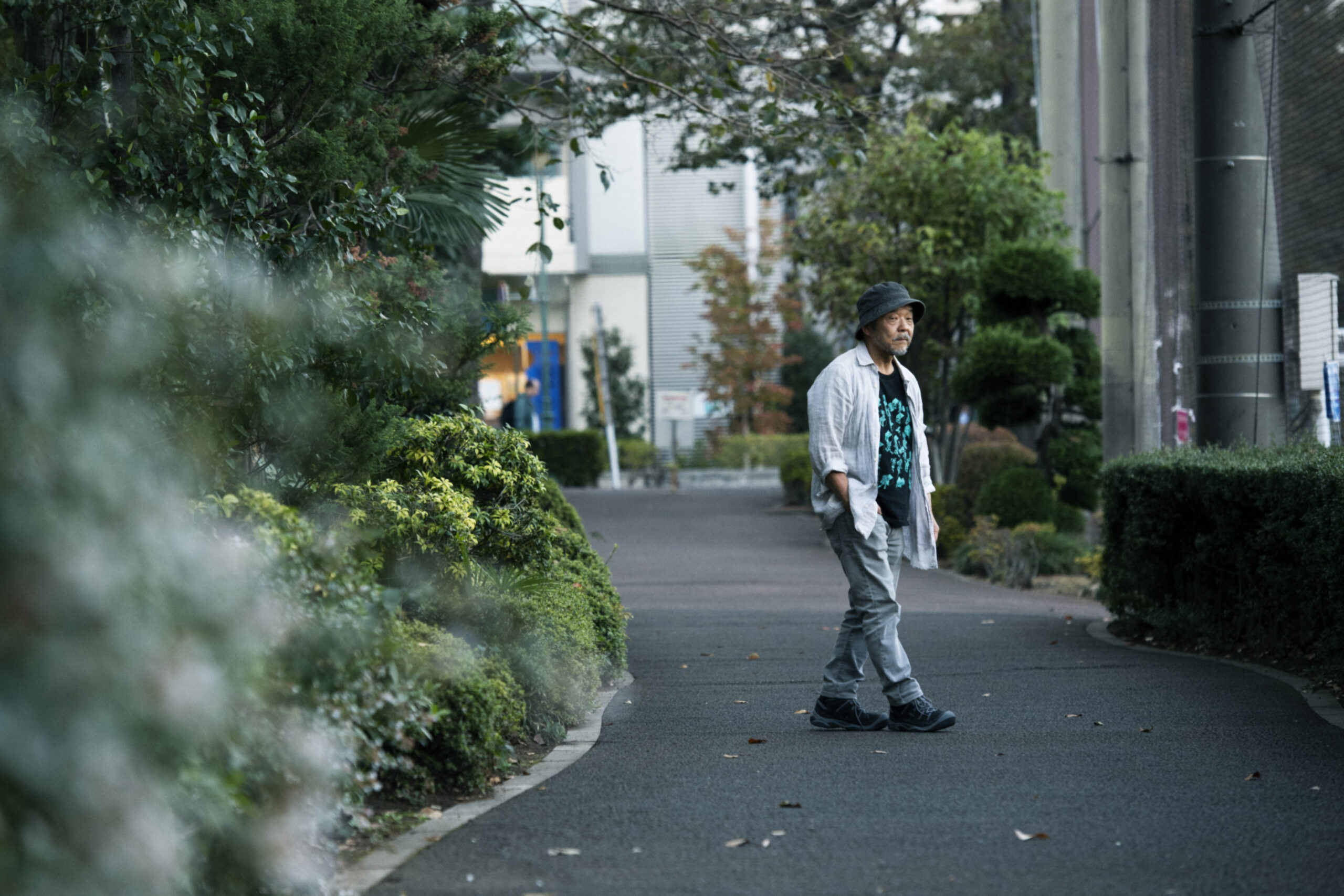
Mamoru Oshii’s Drive to Increase Information and Immersion: The Aims of the First Film Adaptation of “Ghost in the Shell” #01
Text: Satoshi Asahara / Photo: Taro HiranoManga author Shirow Masamune’s The Ghost in the Shell began serialization in 1989. Its first adaptation to picture came in 1995 with the theatrical film of the same name, directed by Mamoru Oshii. Well-received within Japan and abroad, the film and its sequel (Innocence) would go on to influence many other creators. For this interview, we speak with the pioneering artist on why they felt suited to create the film adaptation. We hear about production struggles, the little known background behind famous scenes, and about the work that went into bringing the Ghost in the Shell world to life through animation.
#01 My First Decision was to Forego Fuchikomas
-When did you first start working on Ghost in the Shell, Mr. Oshii?
Mamoru Oshii (“Oshii”) Once serialization of the original manga started in Young Magazine, I would check out issues as soon as they came out. I had read Shirow’s other works like Appleseed and ORION before, so the Ghost in the Shell world didn‘t feel out of place. It then came out on paperback, and I received an offer to work on an anime version about a year after that.

-At the time, you had just finished production of Patlabor 2: The Movie, and were looking for a next project. Do I have that right?
Oshii: Right. I had actually been thinking of proposing a different project to Bandai Visual, which later went on to become Jin-Roh: The Wolf Brigade, but they made their offer before I had the chance. They didn’t even look at my proposal. They just slapped down a copy of the Ghost in the Shell manga and asked me to direct it. I was caught off guard, but when I thought about it, I realized someone would do an anime of GitS eventually, and had always felt like it might be me, someday.
-Was it challenging to depict the setting of the original through anime, considering it was during an era where most people didn’t have access to the Internet?
Oshii: Some sci-fi fans in the anime industry have said that Ghost in the Shell is like a foundational education. It was a given that you’d read it, and everyone knew it sparked the curiosity of animators. Of course, the sci-fi setting is incredible, but the real appeal of Shirow’s work is in the details, like the immense amount of annotated information. I was sure it would be near impossible to put it all into a single film. Then when I opened the envelope for the offer, it turned out there was even less time and budget than I had imagined. *Laughs* So I went for a clear theme from the start, and decided what I would have to omit.

-The film Ghost in the Shell is noteworthy in that it doesn’t feature the Fuchikoma partner mechs from Public Security Section 9.
Oshii: Not including the Fuchikomas was my first decision. I wanted the story to focus on Motoko Kusanagi’s identity as a human and a cyborg, and would have had to address the existence of AI if I had brought in the Fuchikomas. I think it would’ve muddled the theme. I also didn’t have the budget for a two-hour film, so from a production standpoint, there was no room for them. On the other hand, the tight conditions meant that I could cut out all sorts of elements. And even though action scenes are an essential part of sci-fi movies, there aren’t that many in the film.
-You managed to fit in their thermoptic camouflage and some gunfights.
Oshii: We did get those. Lately, Hollywood films have a big setpiece every 20 minutes, but Ghost in the Shell mostly leaves out any action in the middle act. It lacks the “development” part of the Asian story structure of introduction, development, turn, and conclusion. Instead, I created a “lull” where the story stalls in the middle, which is a trick I often use. For example, the scene where Motoko absentmindedly walks through the billboard-covered city. I wanted to use that scene to show a near-future world that is overflowing with data.

-Could you tell us a bit about why the city in the film draws design elements from Hong Kong?
Oshii: I had been to Hong Kong several times for live action films, and felt that its clashing atmosphere suited the film. But the main reason was that I was familiar the area, which made it easier to cover. I often say “film is a pragmatic form of expression,” and that basically means all we can do is show what we want convey, visually. The rows of gigantic billboards and posters, throngs of people, planes in the sky, and boats in the water below. The information overload of their chaotic world is expressed through the background visuals of the city. Some would say it’s the characters and dialog, but for me, I think that the locations convey the most critical information in films. That’s why even in Ghost in the Shell, I packed enough data into the film’s runtime that it’s not possible to absorb all of it in a single viewing.
-Does the overwhelming amount of visual information give the screen depth and make the near-future setting more persuasive?
Oshii: The cyberpunk trend at the time originally took off from novels, and basically established this near-future setting by creating a new vocabulary for it. But for example, even if an author can leave “communicating via cyberbrain” to the reader’s imagination, only the images have any power in an anime. Things like wireless connections don’t come across clearly. That’s why we used things like cables to depict it. Our job was to pursue every little detail. Compromising on that front would have left us unable to convey the sense of the coming future. Of course, you normally wouldn’t want to do that with time and budget constraints. But in my case, I actually needed money at the time, which is what motivated me. *Laughter*

-You had just built and moved into a new house, hadn’t you?
Oshii: Right. I had a mortgage, and really needed to be working at that point. I was planning to take any job, so the offer for Ghost in the Shell came at the perfect time. Just before that, I used a layout system to increase the amount of information we could fit intoPatlabor 2: The Movie,doubling the volume from the first movie. I had been thinking about doubling that with my next project. Then I came across the perfect film to do it. I insisted on increasing the audio information alongside the images.
-Which parts do you mean, specifically, with the increased audio data?
Oshii: We put particular effort into the sounds of the guns. Guns all sound different depending on the model, and we focused on everything from the sound of the shell casings after firing, directional sounds, and echoes. The music that plays during the market scene was also written to represent what might be popular in that world. When we hired a singer from Hong Kong to actually record it, a lot of the local media showed up. That alone was quite unusual at the time, but it was a bit awkward, since we couldn’t tell them “it will only be audible in the background for a moment.”
-I feel like your team in Hong Kong may have chickened out if they knew the truth… It sure does show the emphasis you put on detail though.
Oshii: Without lots of little things like that, you can’t create a unique world for a film. It wouldn’t feel believable if the machine guns and SMGs had identical sound effects. This isn’t some mania of mine, it’s just that layers of fine detail make fictional worlds feel more real. And that’s why it took us about four months to finish the designs and plans for the guns in Ghost in the Shell; it was quite a lot of work. It wasn’t easy, but it’s what you have to do if you want to work on anything set in a fictional world.
Continued to #02 An Animator’s Tenacity Establishing Immersion
Mamoru Oshii
Born August 8, 1951. A native of Tokyo. Graduated from the Tokyo Gakugei University Faculty of Education. Began working at Tatsunoko Production in 1977. Went on to work at Studio Pierrot (now known as Pierrot) before becoming self-employed. Major directorial works include Urusei Yatsura: Only You, Angel’s Egg, and Patlabor: The Movie, among others. The film Ghost in the Shell reached the number one spot in the US magazine Billboard’s Cell/Video category. Innocence was shown for the Cannes International Film Festival’s competitive division.

